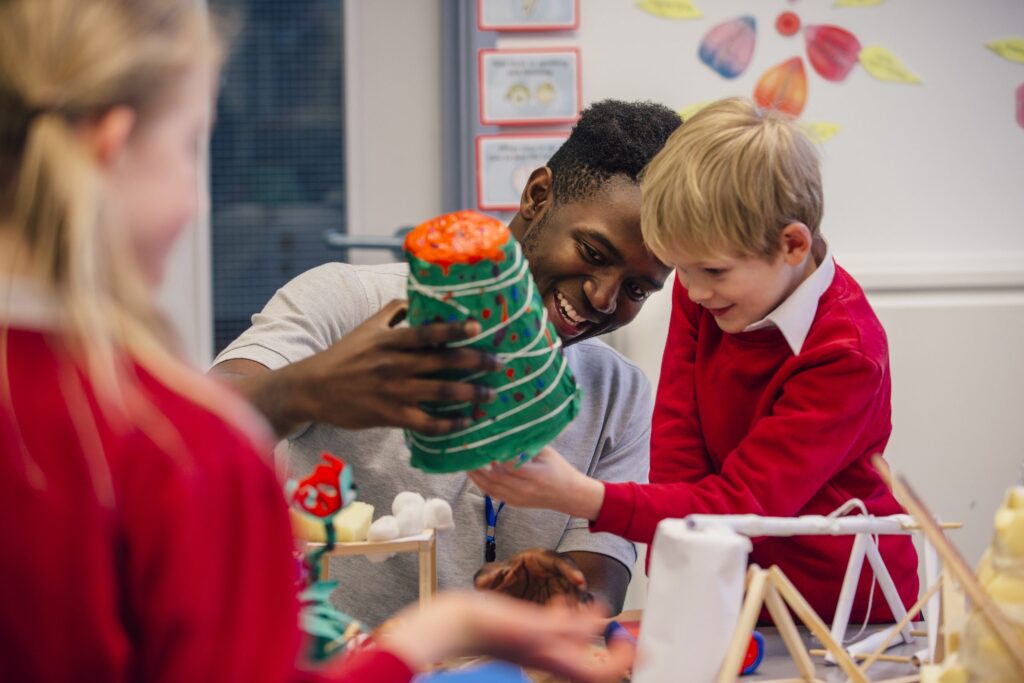Suitable for: Year 3 to Year 6
Learning Focus: To recognise and be able to explain the changes in the purpose of space exploration over the last 50 years.
To use their knowledge of space to inform ideas on living there.
To recognise and explain the differences in living conditions between the earth and the moon
We’re all used to watching the news and seeing the latest exploits of NASA; whether its landing a craft on Mars or flying an ancient spaceship past the outer reaches of our solar system but it’s not just NASA in the ‘Space Race’, countries like China, Japan and India, amongst others, have got in on the act too.
Not to be outdone, Europe has its own space project called the European Space Agency and, despite most of the exciting stuff like launches being done in French Guiana, Britain has a big input through its space research centre in Leicester where you’ll also find the very interesting National Space Centre, one of Britain’s top visitor attractions.
This year the ESA is 50 years old. Formed as the European Space Research Organisation in March 1964, it went on to become what we know today as the European Space Agency.
Over this time the mission of the organisation has changed dramatically. Initially no one and nothing had been to the moon, now people have been there so often, no one bothers anymore. Other attractions of space now beckon and in these activities the pupils will find out just what is happening in space now and why?
A good place to start is to complete a class timeline. You can take it right back to the history of flight, maybe beginning with mythical Icarus and Daedalus, or just focus on when humans looked up at the moon and the stars and said,
“I want to go there!”
With timelines I always like to give the pupils a chance to put in a ballpark figure before honing in on the details so ask them the following…
How long ago did the first rocket break through the earth’s atmosphere into space?
How long ago was the first manned spaceflight?
How long ago did we first land someone on the moon?
How long ago did a spacecraft first land on Mars?
Those are the key achievements and if you want to extend the timeline you can add more but don’t get too bogged down in detail. Notice I don’t ask younger pupils ‘when’ as dates are more abstract than time in years. If they’re too young to understand that, change it to ‘in whose lifetime?’ Theirs? Their parents? Their grandparents?
Now ask the pupils what they think the future will hold. You’re likely to get answers like landing a person on Mars, living on the moon, visiting Venus and from the very switched on, when we will start bringing resources back from space commercially.
Again, try to timeline these and you’ll find that by looking at the NASA and ESA websites you can get an idea of if, or when, these events are likely to happen.
What is of most interest and most educational value is looking at the change in the aims and objectives of the space programme. Unexpectedly yet inextricably linked originally with politics, it’s now become more cooperative and with a focus on discovery, commercial and environmental issues.
Over your timeline it’s worth adding in ‘time strips’ for older classes, showing political issues such as the cold war, environmental issues such as the discovery of global warming and the efforts made to counteract it and the exhaustion of the world’s natural resources.
By doing so you can show why space policy changed from the ‘Star Wars’ ideal of the 1980s to trying to find if life is possible in other parts of the solar system and universe today.
Time for some class debate now…
Ask the pupils if, and when they think someone might be living on the moon?
You can focus them by prompting about what’s needed for life – food, water, oxygen etc. and how it can be provided. You can ask why people might want to live on the moon. What would need to be done before the first person can ‘move in’? What would they do there? Would they have a job? Would they just stay for a holiday, and if so, what would they do on their holiday?
You can take the ideas forward to art and encourage them to design a house for the moon. What would it need that’s different to what a house has on earth? Thinking about rainy Britain, they might say they won’t need gutters or drainpipes! Their designs can give you a good idea of what they understand about conditions on the moon or in space.
They could design a transport system that could take back minerals from the moon to earth or one that helps people get about on the moon.
Finally, for creative writing they could write about what they’d enjoy about living on the moon and what they’d miss from earth. They could describe a holiday on the moon or design an advertising campaign for living on the moon or taking a holiday there.


